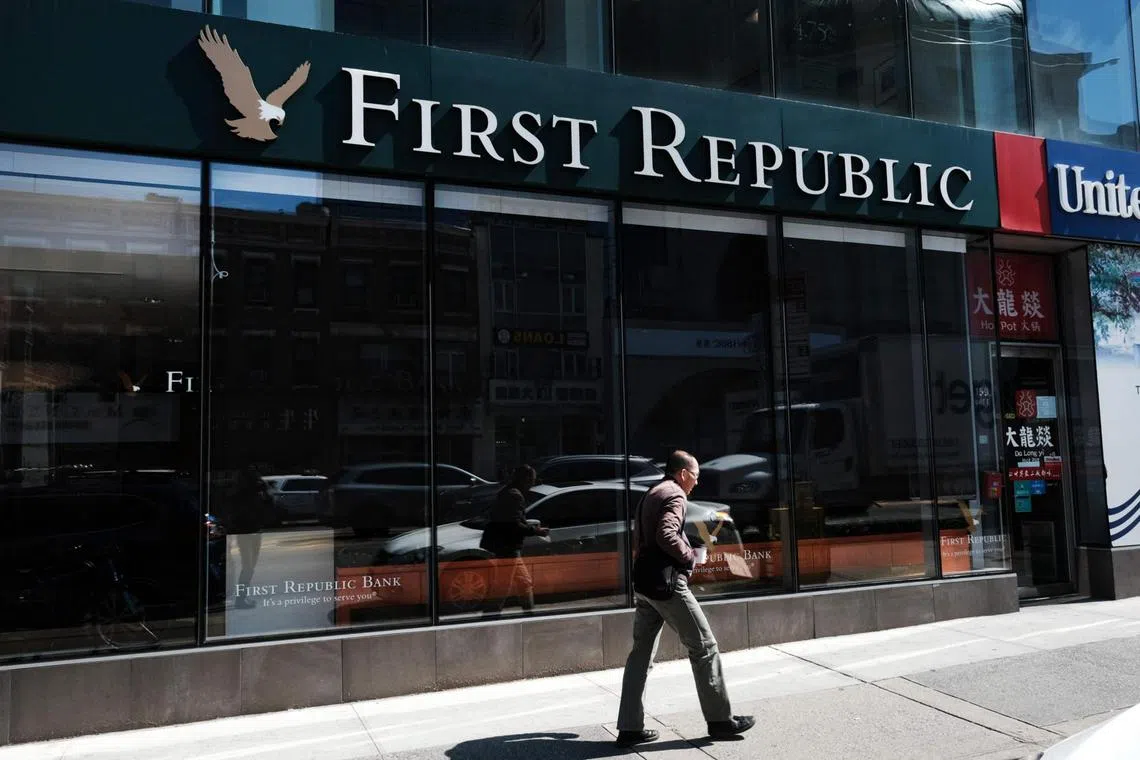US bank First Republic lost $136 billion in customer deposits
Sign up now: Get ST's newsletters delivered to your inbox

First Republic reported a quarterly profit of US$269 million (S$359 million), down one-third from a year earlier.
PHOTO: AFP
Follow topic:
NEW YORK – First Republic Bank, the most imperilled United States lender following the banking crisis in March, has
In a conference call on Monday to discuss its first-quarter results with Wall Street analysts, the bank’s executives offered just 12 minutes of remarks and declined to take questions, leaving investors and the public with few answers on how it would escape its crater.
One thing is known: The bank, which caters to a well-heeled clientele on the coasts, seems to be hanging by a thread. During the first quarter, it lost a staggering US$102 billion (S$136 billion) in customer deposits – well over half the US$176 billion it held at the end of 2022 – not including a temporary US$30 billion lifeline it received from the biggest US banks in March.
Over that same period, it borrowed US$92 billion, mostly from the Federal Reserve and government-backed lending groups, essentially replacing its deposits with loans. That is a perilous course for banks, which generally do business by taking in relatively inexpensive customer deposits while lending money to homebuyers and businesses at much higher interest rates.
First Republic is still making some money; it reported a quarterly profit of US$269 million, down one-third from a year earlier. It made far fewer loans than it had in earlier quarters, keeping with a general trend in banking, as industry executives worry about a recession and softening home prices and sales.
The bank’s stock dropped about 20 per cent in extended trading on Monday, with the fall worsening after company executives declined to take questions from analysts.
First Republic’s share price is down more than 85 per cent since mid-March.
The bank said its deposit exodus largely ceased by the last week of March. From March 31 to April 21, the bank said it lost only 1.7 per cent of its deposits and that most of those withdrawals were related to tax payments by its clients.
The slide began roughly six weeks ago, when mid-sized lenders Silicon Valley Bank (SVB) and Signature Bank were taken over by the US federal regulators after customers pulled billions of dollars in deposits.
First Republic, based in San Francisco, was widely seen as the lender most likely to fall next, because it had many clients in the start-up industry – similar to SVB – and many of its accounts held more than US$250,000, the limit for federal deposit insurance.
First Republic has been in talks with financial advisers and government officials to come up with a plan to save itself that could include selling the bank or parts of it, or raising new capital.
Much more remains to be done. The bank said on Monday that it would cut as much as one-quarter of its workforce, and slash executive compensation by an unspecified sum. NYTIMES

